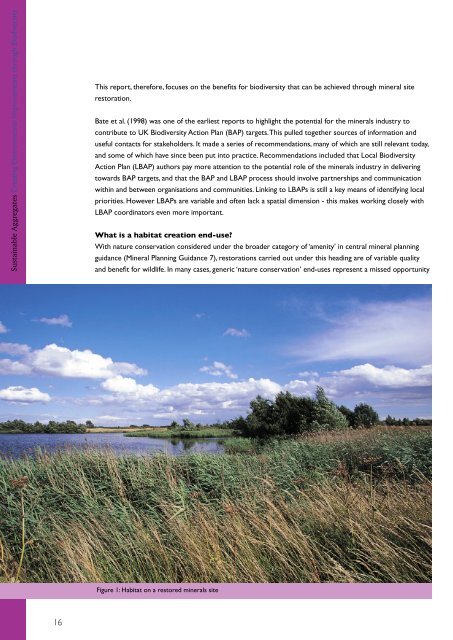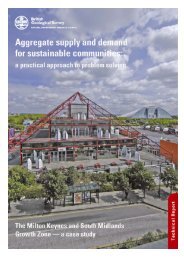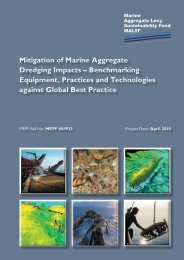creating environmental improvements through biodiversity
creating environmental improvements through biodiversity
creating environmental improvements through biodiversity
You also want an ePaper? Increase the reach of your titles
YUMPU automatically turns print PDFs into web optimized ePapers that Google loves.
Sustainable Aggregates Creating Environmental Improvements <strong>through</strong> Biodiversity<br />
This report, therefore, focuses on the benefits for <strong>biodiversity</strong> that can be achieved <strong>through</strong> mineral site<br />
restoration.<br />
Bate et al. (1998) was one of the earliest reports to highlight the potential for the minerals industry to<br />
contribute to UK Biodiversity Action Plan (BAP) targets. This pulled together sources of information and<br />
useful contacts for stakeholders. It made a series of recommendations, many of which are still relevant today,<br />
and some of which have since been put into practice. Recommendations included that Local Biodiversity<br />
Action Plan (LBAP) authors pay more attention to the potential role of the minerals industry in delivering<br />
towards BAP targets, and that the BAP and LBAP process should involve partnerships and communication<br />
within and between organisations and communities. Linking to LBAPs is still a key means of identifying local<br />
priorities. However LBAPs are variable and often lack a spatial dimension - this makes working closely with<br />
LBAP coordinators even more important.<br />
What is a habitat creation end-use?<br />
With nature conservation considered under the broader category of ‘amenity’ in central mineral planning<br />
guidance (Mineral Planning Guidance 7), restorations carried out under this heading are of variable quality<br />
and benefit for wildlife. In many cases, generic ‘nature conservation’ end-uses represent a missed opportunity<br />
Figure 1: Habitat on a restored minerals site<br />
16

















